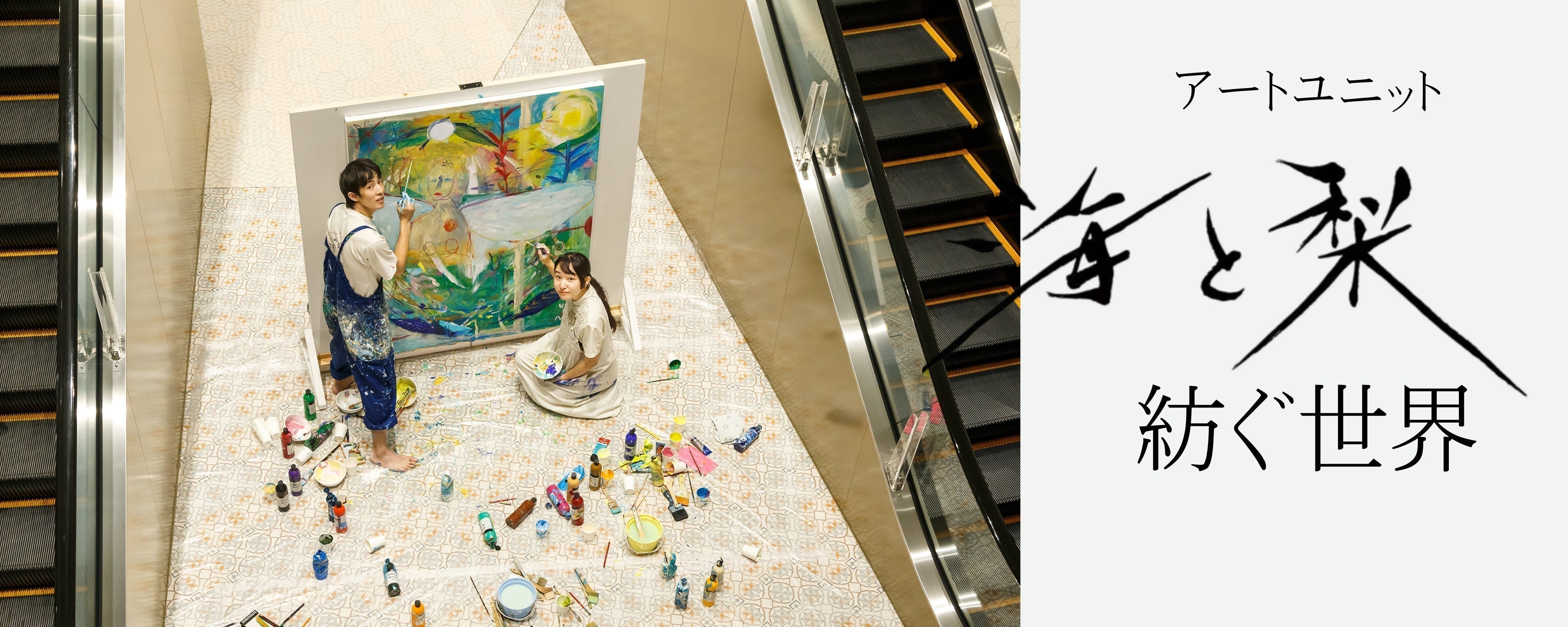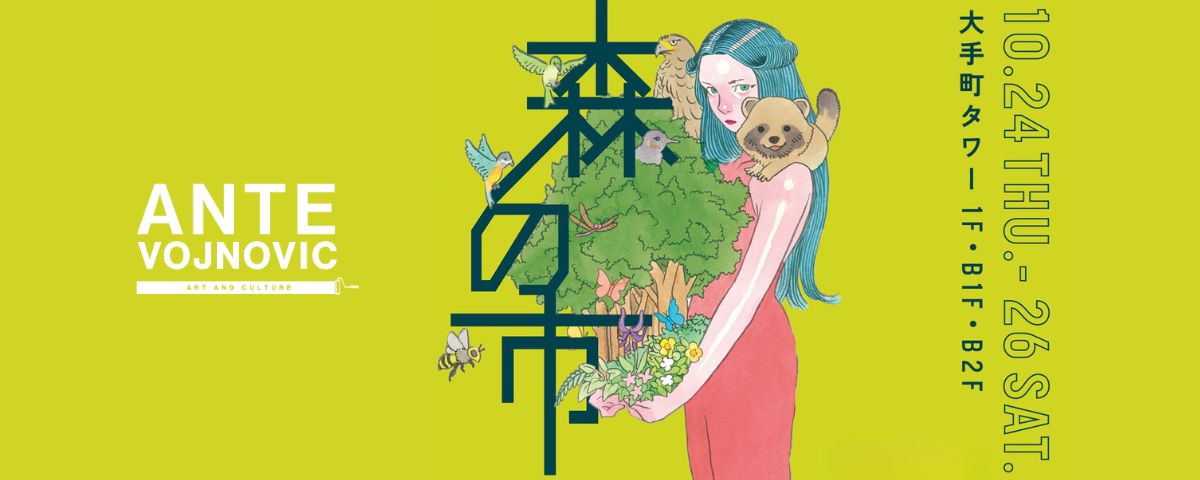The world spun by the art unit "Umi to Nashi" - the origin of their creations - Part 1
Umi to Nashi is a unit that produces and manages art paintings and the jewelry brand Leon art jewelry. The duo began their activities in 2019 and have combined their respective sensibilities to create unique expressions.
In this article, we asked them about how they met and the origins of their creations.
- First of all, could you tell us about the kind of activities you usually do as a unit?
Kaito: I mainly do two things: create paintings and create and manage the jewelry brand "Leon art jewelry."
-What made you two start working as a unit?
Kaito: We first met at Takahiro Kimura's online painting class in 2019. We liked each other's work and we started to keep in touch because we were close in age and lived in similar areas.
Rino: There were a lot of housewives and older people in the class, but it was rare to find someone close to my age. I felt a sense of closeness.

-What were your impressions of each other at that time?
Rino: Every month, we had to submit a drawing based on a specific theme, and everyone would admire it. At the time, he was active under the name Umi, not Tokito Kaito, and just looking at his drawings, I thought he was a woman. I had the image of him as someone who painted beautiful pictures of flowers and such.
Kaito: I was the first to join the online class, and Rino joined later. Her collages were cool and sharp, but when I actually talked to her, I was surprised by the contrast to her gentle personality.
-What kind of conversation did you have when you met in person for the first time?
Kaito: The first time we met was at Expo Commemoration Park. I remember we talked about his artwork and paintings.
Rino: When we first met, Kaito showed me the pictures he had actually drawn. Up until then I had only been able to see them online, so I remember being really happy to see them in person.
--Did you both actually bring your own works with you?
Rino: I didn't have one.
Kaito: I was the only one who took the files.
-Do you remember any thoughts or impressions you had when you met at Expo Commemoration Park?
Kaito: I had an image of the work in mind, so I felt a gap.
Rino: The name Tokito is really cool, so even if I never meet him again, I wanted to make Tokito my stage name.
--It's certainly a surname I haven't heard of very often.
Rino: So, when we broke up, I was thinking of secretly making it my stage name.
--I see (lol) Thank you.
--From here on, I'd like to ask you about your creative expression. First of all, what do you value most when creating your work?
Kaito: Making accessories and paintings are quite different. We each create accessories separately until they are completed, but paintings are done in a style where two people work together on the same screen at the same time, so the feeling is different. When making accessories, I make things that I think are beautiful, but I also imagine the customer's face and create something that I think they would like.
We draw pictures together, so we don't have to go out of our way to do that, but we do it anyway. In other words, the basic premise is that we're restricted, and we try to accept that. For example, even if I've decided how I want to draw something, I've decided that I'll accept it if Rino draws it in a different way.
Rino: Since we started working together, I have often felt that miracles are scattered throughout our daily lives. I want to capture the mystical feelings I discover and the way I am moved by nature, and the way ordinary scenery sparkles, forever in my accessories.
Since accessories are meant to be worn by someone, I create them with the hope that they will become a talisman that can be kept for a long time to come.
--After hearing about your thoughts on your creations, I felt that although they're not exactly the same, you both have something in common. In particular, when you create accessories, you both think of the customer's face and want to deliver them to someone. If you narrow down the "someone" you both say more specifically, do you have a specific person in mind that you want to deliver your creations to?
Rino: My work is quite colorful, so my motivation for creating it is mainly the inspiration I get from the beauty of the colors. I think the inspiration for the beauty of colors is something that doesn't matter to people of all ages or genders. I'd be happy if I could share that inspiration with people of ages that we don't usually talk to.
Kaito: It doesn't matter what age, gender, or nationality it is, we make it for people who have similar sensibilities.
--When I first saw your accessories, I had the feeling that they could be delivered to anyone, so I'm glad I had the opportunity to hear more about them.

--Now, I'd like to ask you about the accessories. How did you come up with the idea of combining accessories with the poems you wrote?
Kaito: Rino was originally interested in poetry. It was difficult to create a place where many people could see her poetry, so we came up with the idea of combining accessories with poetry, so that the accessories would become like amulets and people could read the poetry as well.
Rino: I like fortune-telling slips. I thought it would be fun if the one I chose had a message attached to it and people could enjoy it and think, "Oh, this is exactly how I'm feeling right now," so I started doing it.
--When I first saw it, I was also intrigued by the fusion of accessories and poetry. I felt like I wanted to talk more and wonder, "Why is this poem attached?" Is there anything that has actually made an impression on you while interacting with customers?
Kaito: Some people look at the accessories and choose one, but some find a phrase that they need at the moment and buy it. That moment feels like a miracle, and it's very moving when the customer's preference for "my feelings x the words of the poem x the accessory" matches up and the piece reaches them.
-- I think words are a way to communicate directly to people who aren't good at art. What kind of difference do you feel when you express yourself through words and when you use something a little more abstract like an image?
Kaito: The words in poetry are different from the words we normally speak. Between the words we normally speak, there is highly abstract poetry. I think poetry exists to connect the gap.
Rino: I think poetry is a door to enter a work.
--Do you both think that the titles of your paintings serve as a door through which viewers can enter the work, rather than as a way to better convey your own expression?
Rino: That's right. If you had a cookie tin, the cookies would be like a painting or artwork, and the decoration on the tin would be like a poem.

This concludes the first installment of the series.
Next time, we will take a deeper look at the two artists' painting practice and live painting.
[Editor's Note]
Following the paths they have taken up to where they are today, I felt that it is precisely because of the mutual respect they have between them that they are able to create works that move people's hearts.
A picture drawn together, accepting each other's different perspectives.
Poetry and accessories that empathize with the wearer's feelings.
Each piece is imbued with the thoughts of the two artists.
Their thoughts reach many people and then pass on to the next person. I felt a strong power to connect people in the work of these two artists.
[Exhibition information]
"Between Everyday Life and Dreams" Sea and Pears Exhibition
Over 30 works will be on display, including works by Umi and Nashi, Kaito Tokito, and Rino Tokito. The artists will be present every day, so please come and visit.
August 27, 2025 (Wednesday) - September 2, 2025 (Tuesday)
[10:00-19:00 / Last day ends at 17:00]
Isetan Urawa store, 6th floor, The Stage #6 Art (free admission)
For more information, please click here : https://galleryuehara.com/uminashi-iu-m/
Interviewer/Writer: Mizutani Kotone






















